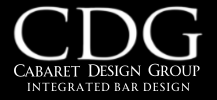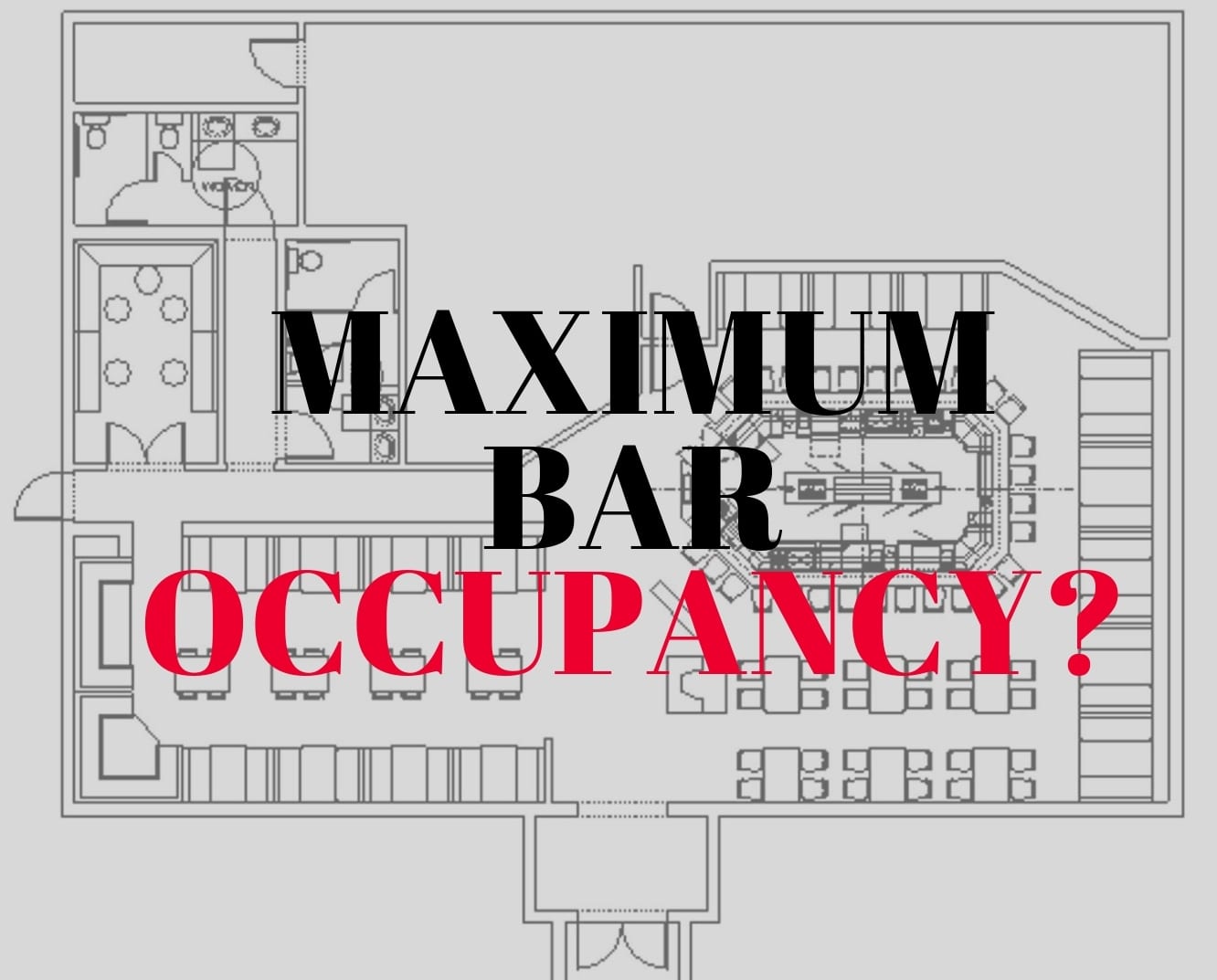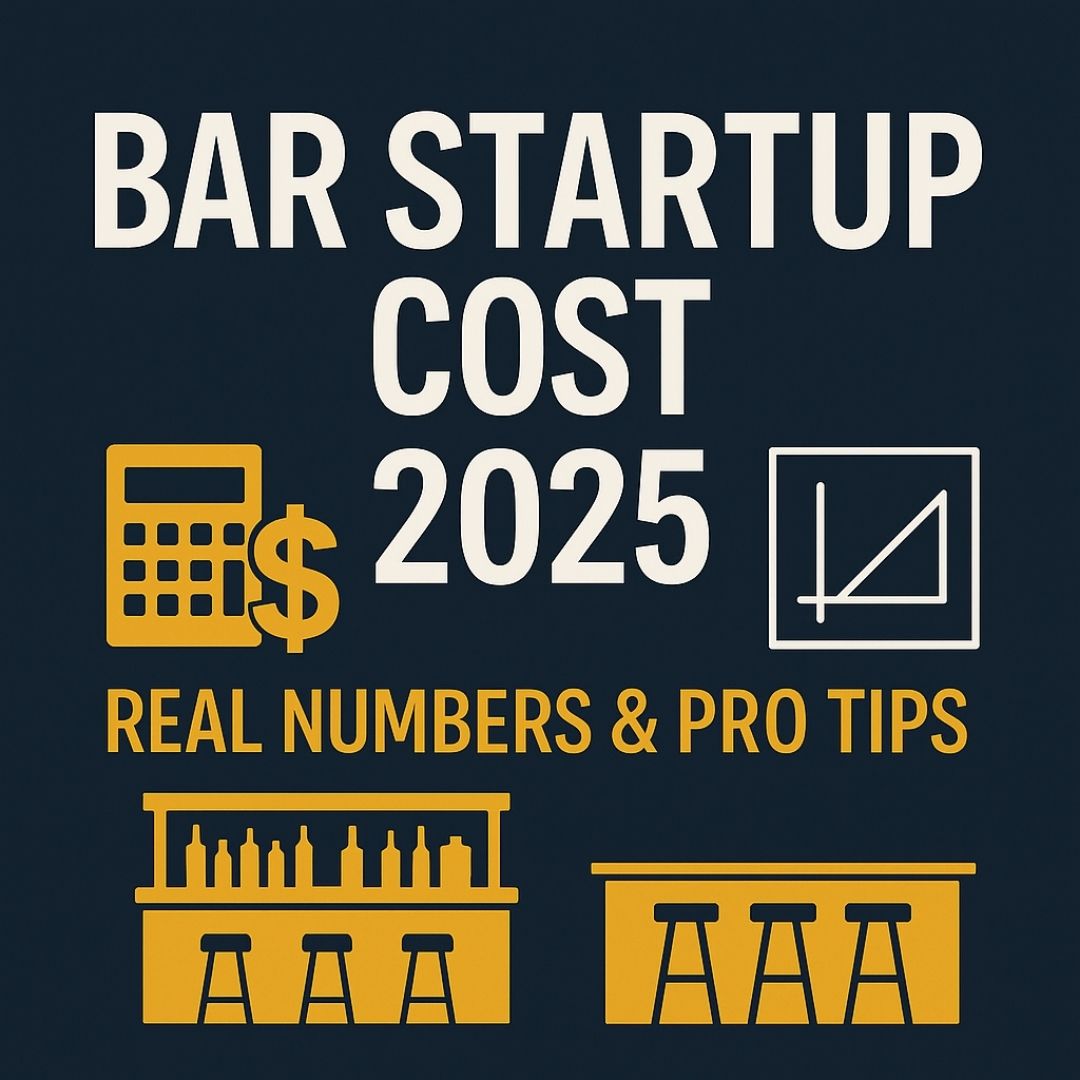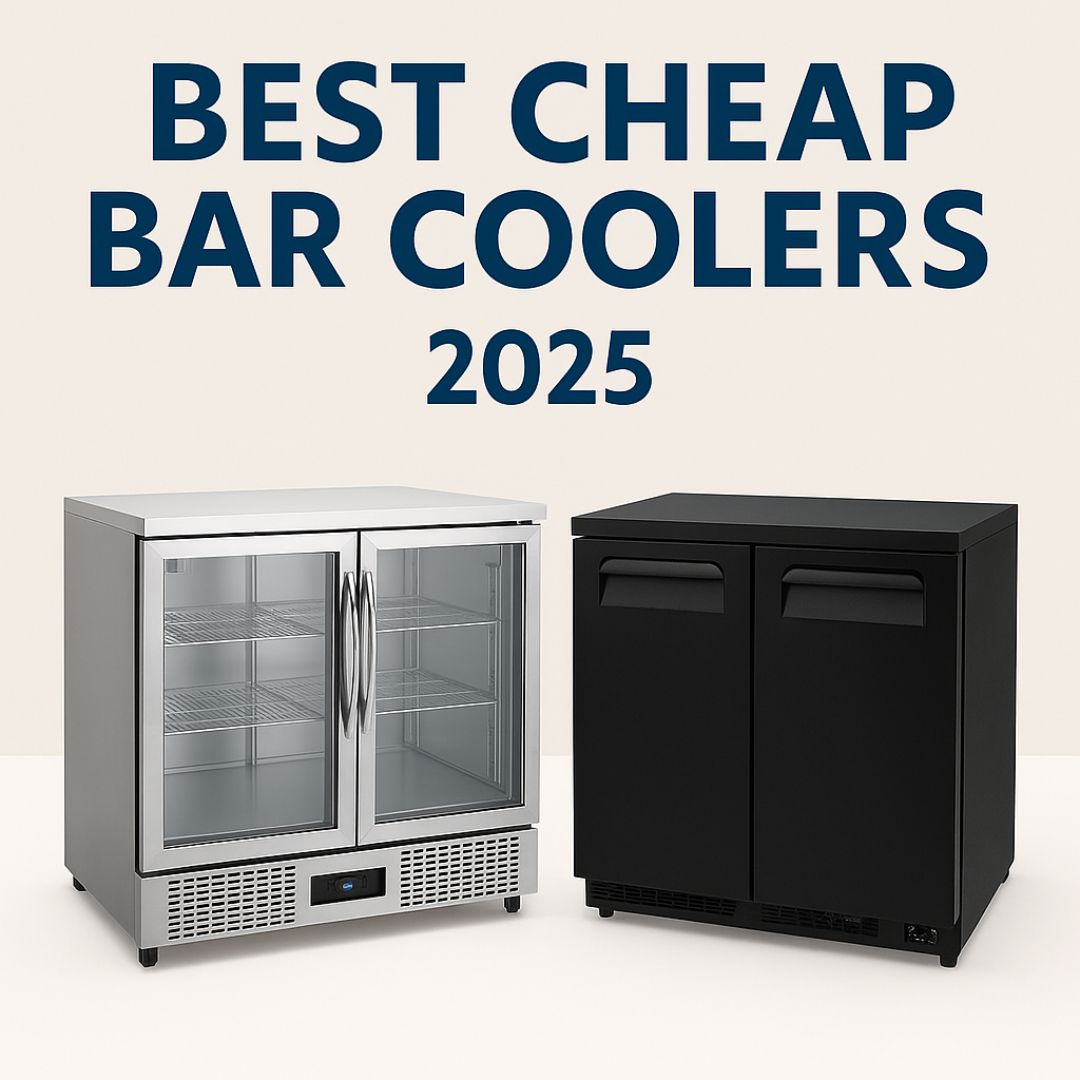How to calculate maximum bar occupancy using floor-area factors, seating layout, pathways and code requirements.
How do you calculate the IBC maximum occupancy load in commercial bar design? Discover how factors such as floor area allowances and seating types affect building occupancy.
IBC: CALCULATED OCCUPANCY LOADS FOR BARS
This article covers overlapping requirements of building codes, standards and regulations and is only a general guideline. It is the interpretation and opinion of Rick Uzubell. Consult your local architect for exact information.
HOW THE BUILDING CODE WORKS WHEN CALCULATING BAR OCCUPANCY
In this article I’m going to discuss how to calculate occupancy loads in bar design. For those who are unaware, the stated occupancy for all buildings is a combination of the building code and fire codes. The International Building Code (IBC) is a solid point of reference, but can be superseded by local building codes. IBC is regarded as the minimum acceptable standard. The local fire marshal has the final stamp of approval of stated occupancies. For this discussion the building of interest will be a 4,700 sq.ft., non-sprinkled one-story restaurant/bar and the IBC is what I’ll be referencing.
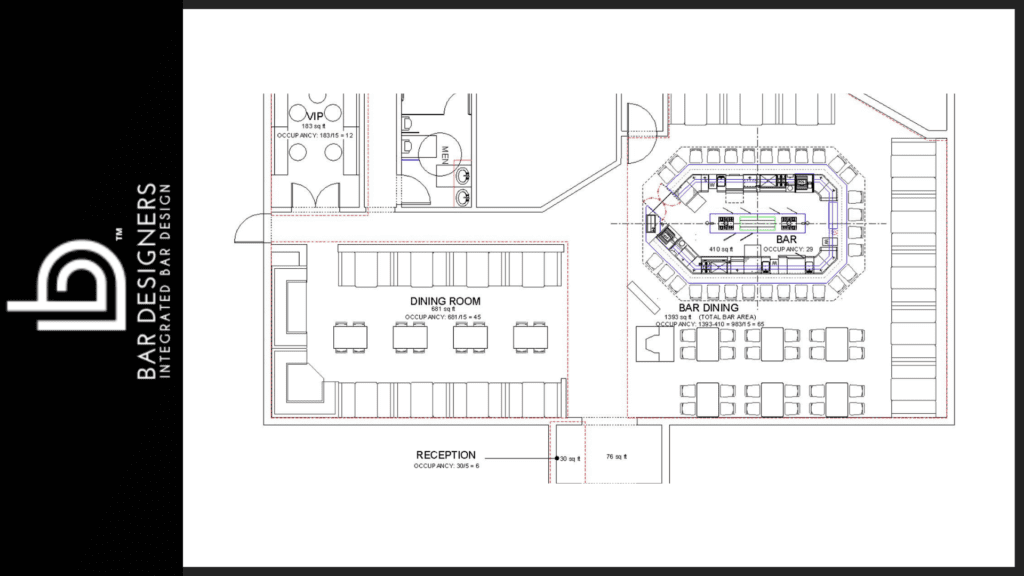
IMAGE OF OCCUPANCY CALCULATION BY AREA
Always consult your local architect
YOUR BRAND BELONGS HERE
Advertise in Bar Design with Cabaret Design Group. We partner with only a handful of select brands whose products align with serious bar design decision-makers.
Advertise with us →The Dream vs. the Price Tag Opening a bar is one of the great lifestyle dreams: a place where friends gather, the drinks are flowing, and the energy is electric. But behind every polished marble countertop and glowing back bar lies a hard reality — also known as the bar startup costs. Too many …
Why Bar Coolers Can Make or Break Your Budget When I presented one of my clients with a premium Krowne bar equipment quote, his face turned pale. He feared his entire project was doomed. And I understood why — the bar coolers alone represented 41% of his equipment costs. That’s the silent budget killer …
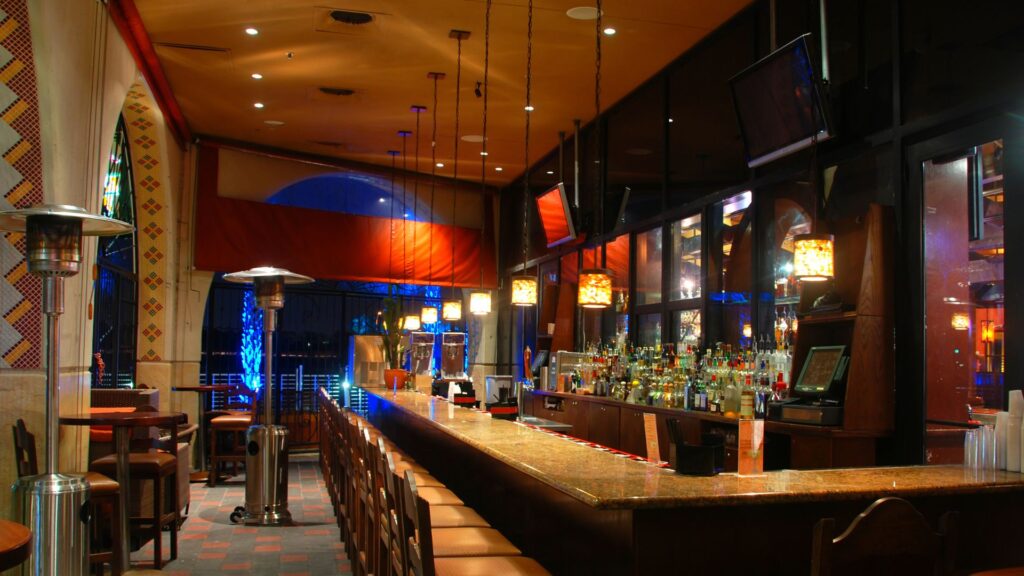
MEET THE EXPERTS BEHIND OUR SIGNATURE PROJECTS
Our flexible collective of F&B consultants brings deep specialization in bar design, kitchen planning, guest experience, and hospitality strategy. Whether it’s a boutique hotel or a national chain, we assemble elite teams to deliver world-class outcomes.
YOUR BRAND BELONGS HERE
Advertise in Bar Design with Cabaret Design Group. We partner with only a handful of select brands whose products align with serious bar design decision-makers.
Advertise with us →STUCK ON YOUR BAR DESIGN? CALL US NOW…
OCCUPANCY LOAD AND EGRESS
As defined by the IBC, restaurants and bars fall under the use and classification of ‘Assembly Group A-2’. The most basic governing limitation to calculate occupancy in bar design is the quantity of egresses (known as exits). Fire safety is at the core of all building codes and egress is the first criteria we address. The following is an excerpt from 2018 IBC:
| Occupant Load | Exits |
|---|---|
| 0-49 | 1 |
| 50-500 | 2 |
| 501-1,000 | 3 |
| More than 1,000 | 4 |
FLOOR AREA ALLOWANCES
The general guidelines for floor area allowances per occupant for A-2 occupancy is as follows:
To calculate occupancy in bar design, we do not use one calculation for the entire building. We need to apply the occupancy rules for each of the various areas to attain accurate calculations.
Consider the 4,700 sq.ft., one-story, non-sprinkled sports bar-restaurant shown above
- The Reception area is a 30 sq.ft. space in the vestibule. IBC allows us to factor 5 sq.ft. per patron, as this is standing space; this yields a total occupancy of 6 (we would only be allowed 7 sq.ft. per patron if this were chairs-only).
- For the Bar, we cannot include the area inside the bar in our calculation – only the number of seats around the perimeter, which is 29.
- To calculate the occupancy for Bar Dining, we must deduct the area of the bar, which is 410 sq.ft. This leaves us a net calculation of 983 sq.ft. According to IBC, for areas with tables and chairs we need to allocate 15 sq.ft. per patron in this area. This yields an occupancy of 65.
- The fourth area of this facility is the Dining Room. Again, we can only use the net area, which is 681 sq.ft. Fixed seating requires the occupancy for the Dining Room is 45.
- The VIP Room, which is 183 sq.ft. and has tables and sofas. We again apply 15 sq.ft. per patron for a total of 12.
OCCUPANCY CALCULATION
If the Dining Room were a dance floor, IBC would allow 5 sq.ft. per patron. This equates to an occupant load of 136 in that area. If the owner wished to operate the Dining Room space as a dance floor on weekends. However, the local fire official may only grant the most-restrictive occupancy of 45.
In fine dining, many owners would likely create a more comfortable open space by allocating 18-20 sq.ft. per patron. This would reduce the occupant load to 34-37.
Back to the example at-hand. To calculate the total occupancy of the bar-restaurant in this example, we simply add each area, as shown in Table 2:
TABLE 2. OCCUPANCY CALCULATION
| Area | Occupancy |
|---|---|
| Reception | 06 |
| Bar (bar seats) | 29 |
| Bar Dining (adjacent seating) | 65 |
| Dining Room | 45 |
| VIP Room | 12 |
| TOTAL | 157 |
HOW IBC CALCULATES EXIT REQUIREMENTS
With a calculated occupant load of 157 for the subject bar/restaurant, this building is required to have two exits.
- IBC prohibits egress through kitchens, store rooms, closets or through rooms that can be locked to prevent egress.
- The aggregate clear egress width requirements (referred to as “exit inches”), must be met. “Bottlenecking” will be eliminated under emergency exit conditions.
- By code, we need to factor .2” of doorway width and .3” of stairway width per patron for buildings without a sprinkler system. In this scenario, this means that we’ll need a total of 31.4” (rounded up to 32”) of total egress (16” per door).
- Because commercial doors have a minimum width of 32”, we’re within the acceptable range.
THE BUILDING CODE IS CONSTANTLY EVOLVING
According to my good friend, architect Tom Kuhn of CSK Architects, as of 2018, IBC has changed its occupancy requirements. For businesses in Occupancy A-2 that serve alcohol, any new or existing modified fire area over 1500 sq.ft. are required to have sprinklers. If you want to meet current code without implementing sprinklers there are some potential work-around design parameters in Chapter 34. Always consult your local architect.
IS THE CALCULATED OCCUPANCY LOAD THE FINAL DETERMINATION FOR A GIVEN BAR?
Final stated occupancy is the decision of the local fire marshal.
My favorite reference book for architectural standards:
https://amzn.to/38q3piJ
POPULAR DOWNLOADS:
UNIVERSAL_BAR_CLEARANCES_WITH_ADA.pdf
Need Help Planning Your restaurant and bar?
RELATED POSTS
CALCULATING MAXIMUM OCCUPANCY FOR BARS
UNCOVER THE SECRET TO THE PERFECT BAR TOP
HOW TO PLAN YOUR BAR AREA FOR PATRON CAPACITY
Curved Bar Design – How to Design a Bar with Equipment
The Secret to Designing a Bar for a Pizza Restaurant
Top 5 Ideas about Bar Countertops
Small Bar Design Ideas and Tips
Most Popular Articles
INTEGRATED BAR DESIGN PROVIDES SINGLE-SOURCE CONSTRUCTION DOCUMENTS
ERGONOMIC EFFICIENT BAR DESIGN INCREASES PROFITS
HOW TO BUILD THE PERFECT BAR IN 2024
HOW MUCH DO DRAFT BEER SYSTEMS COST?
WHAT IT COSTS TO BUILD A COMMERCIAL BAR
BAR EQUIPMENT COST TO BUILD A COMMERCIAL BAR
BAR DESIGN IDEAS – HOW TO DESIGN COMMERCIAL BARS FOR ADA
